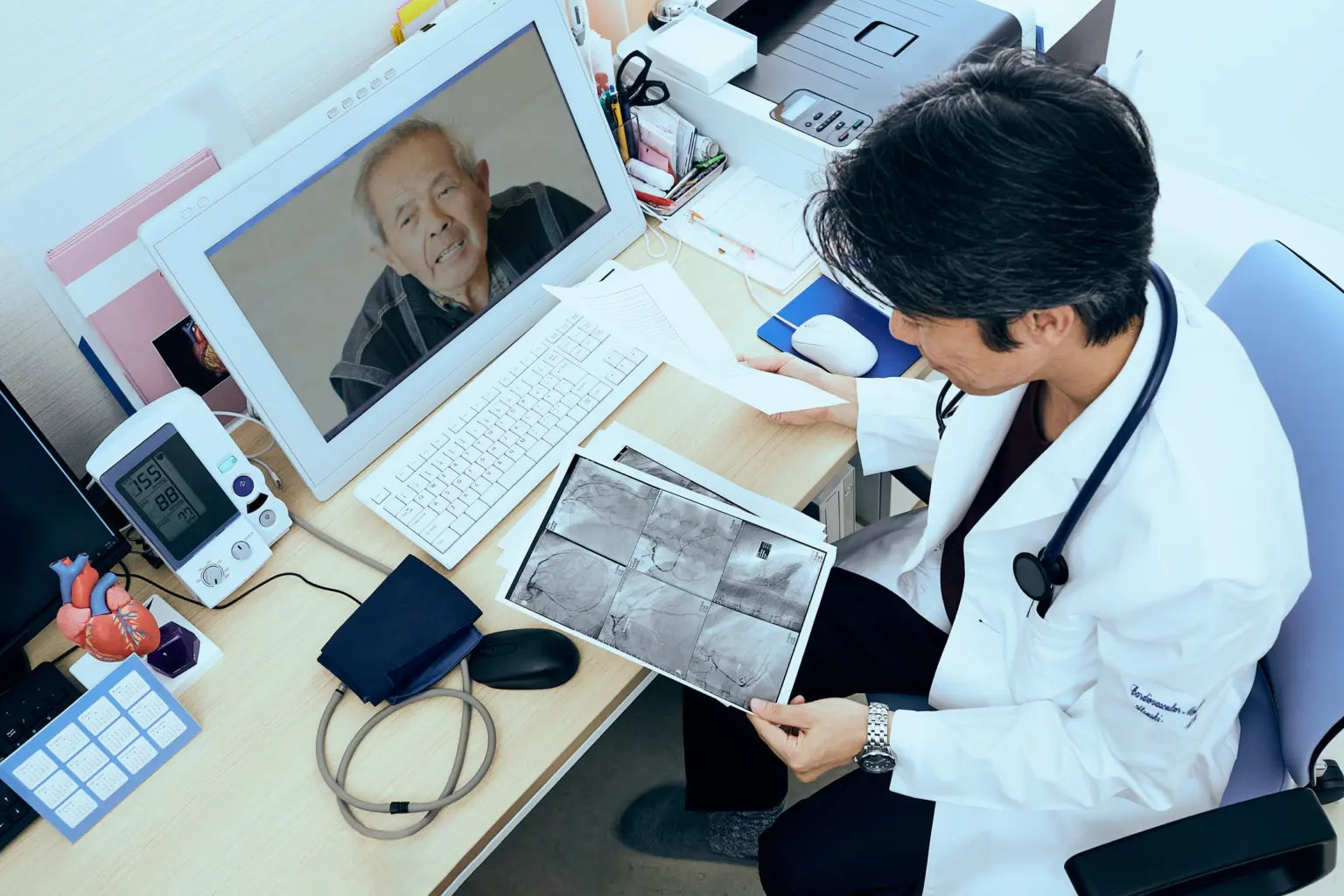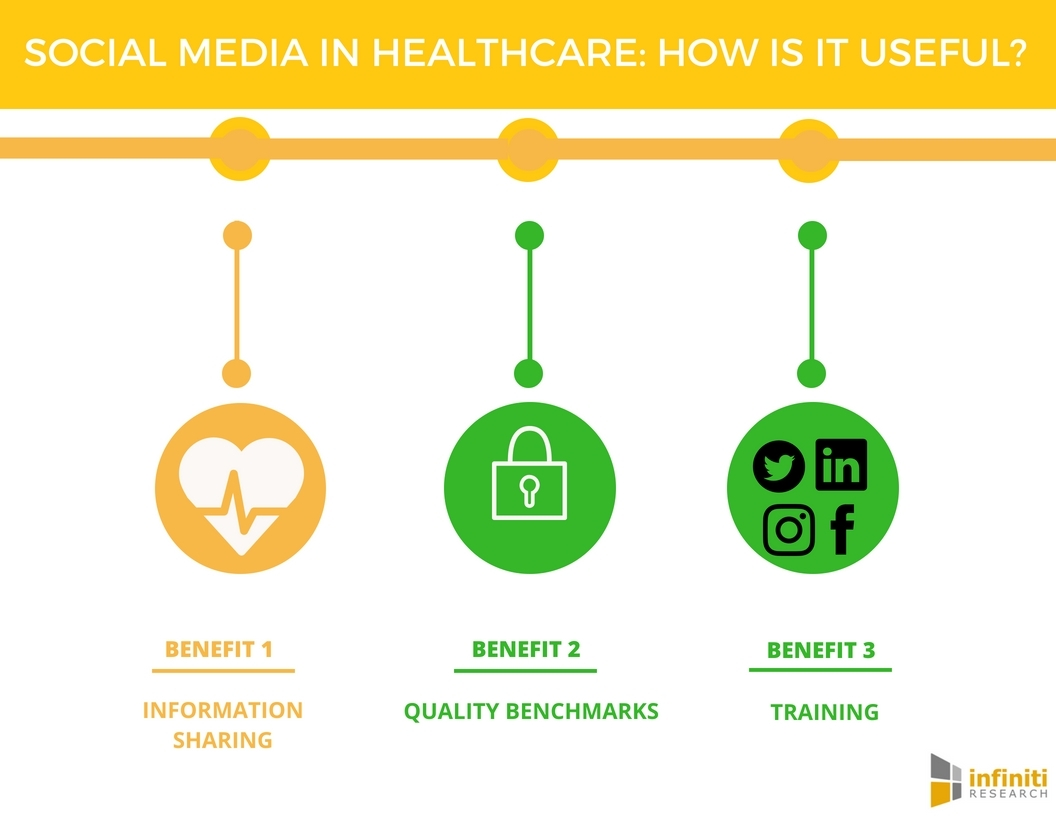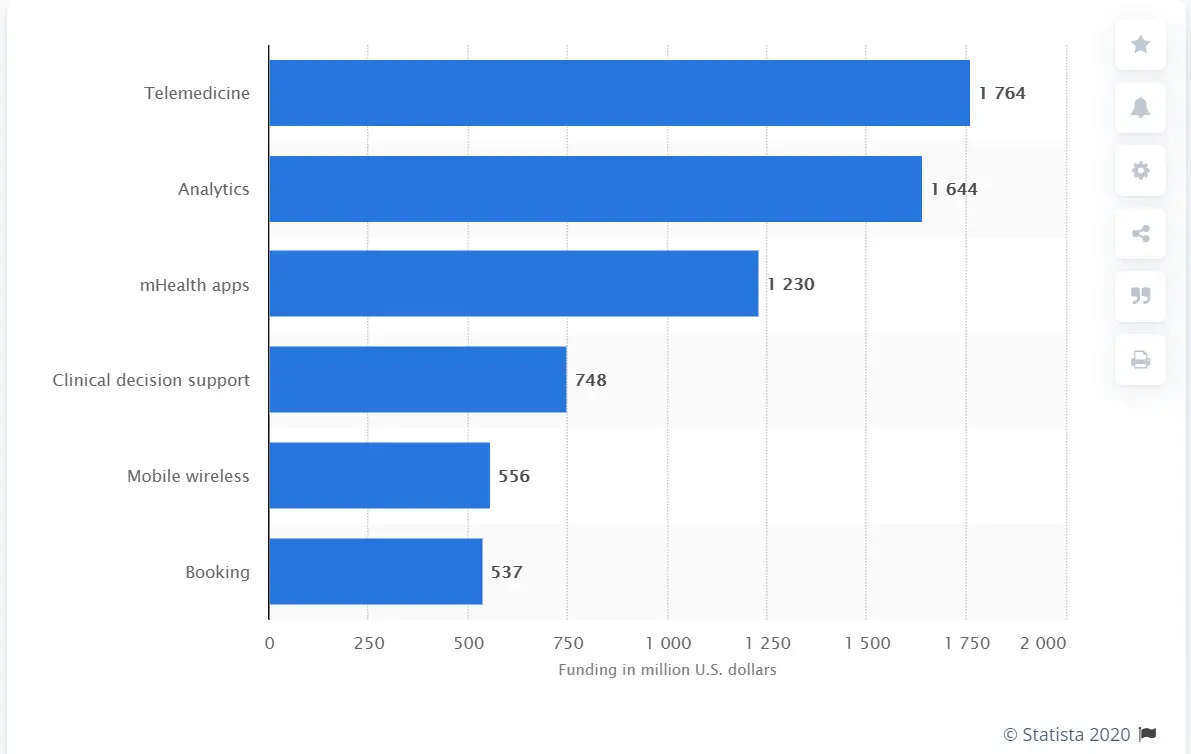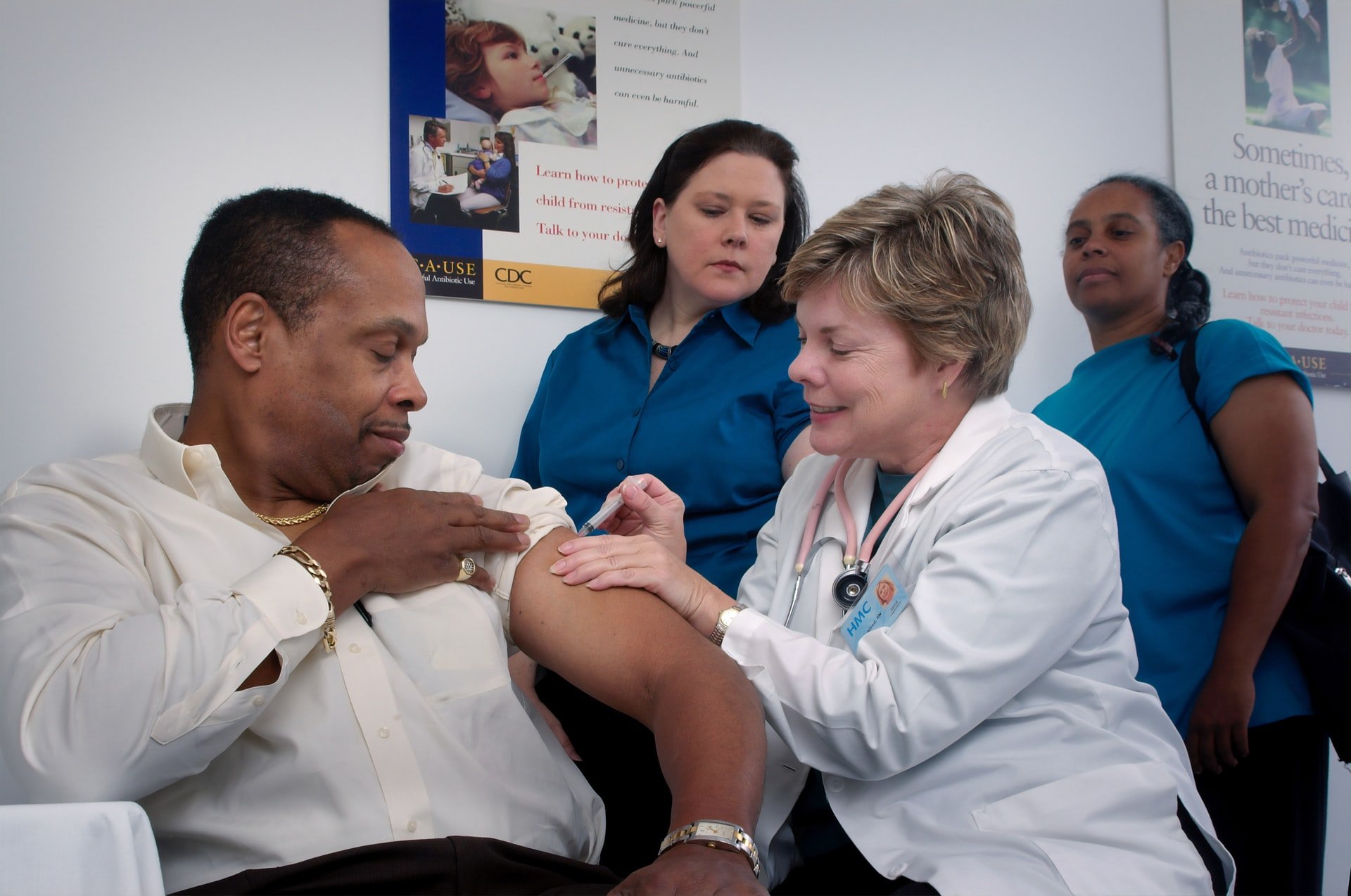In the post-pandemic world, providing exemplary patient care experiences, support, and treatment has become one of the most critical priorities for everyone involved in the healthcare industry. The standard of care for patients and their well-being, as well as the healthcare industry’s ability to reinvent itself, are going to be a decade-long discussion going forward.
The pandemic has taken a toll on both patients and healthcare workers, both physically and emotionally. Everyone must understand the value of improving the experiences for both sides to have a sustainable ecosystem going into the future.
For healthcare providers specifically, it starts with the patients and ends with patients. This article will provide eight patient experience tips to improve your healthcare service.
Source: RingCentral UK
1. Create a helpful online presence to make information more accessible
Having information readily available to every potential or existing patient is a good way to reinvent the patient experience. Nowadays, we’re wired to search and study information online before we commit to anything.
The healthcare industry still has a long way to go to transform itself digitally. One of the things that can be done, and which will affect building for the long term, is having a fully functional and informational website. There are a few things that even a community clinic can do to improve on the information front:
- Having the necessary resources to help reduce bureaucracy. This can include the forms patients need to fill out when they visit a clinic or hospital, which can now be done beforehand to save time.
- If possible, provide the latest queue number information on the website so that anyone who wishes to drop in can gauge whether the doctor visit fits their schedule during the day.
- If building a full-fledged website isn’t possible at the moment due to resource or budget constraints, having a social media fan page and Google Map business page can be good alternatives.
A social media fan page, such as on Facebook, is easy to maintain and for staff to update any type of information. Updating your Google Business Profile is another way to make sure that potential patients can find you, with reviews, business hours, and more.
2. Offer the option of remote appointments for out-of-region patients.
As many countries and regions around the world are still not fully recovered from the pandemic—and we’re likely to permanently transform how things are run going forward—having the ability to offer telehealth services is crucial for both service providers and patients.
For anyone who’s looking to improve their existing remote service infrastructure or get started on building one, remote appointments are a must-have. Here are some benefits that can help you get started:
- It’s a new age, and we have a new approach. Before the pandemic, user adoption and data security were two of the bigger challenges in adopting digital transformation for the healthcare industry.
The progress to make the shift was fast-tracked as early as April 2020 for the U.K. According to the Royal College of General Practitioners, 71% of routine consultations were delivered remotely, which was 25% more when compared to the same period the previous year.
- Taking advantage of video meetings and unified communication for consultations. With multiple layers of built-in security and encryption, video conferencing tools like RingCentral make it safe and easy for doctors to deliver consultations with patients remotely.
The ease of use for staff and added security are becoming more obvious as many practitioners use remote technologies.
- The people are ready. Due to the physical distancing requirements still in place for some countries and regions, people are more used to taking remote consultations than before. Unless there’s a need to physically be in a hospital—for example, in the case of having surgery performed—most of the time, a remote consultation is more than suitable to get the job done.
Telemedicine has been around for a long time, but it’s not until recently that it’s been brought to the centre of attention. You can learn more about telemedicine by reading the Ultimate Guide to Online Telemedicine Courses.
3. Minimise waiting time and elevate the waiting experience for your patients.
Waiting time is one of the reasons that the general public sees visiting a doctor’s office or a hospital as a chore. Improving this aspect of the process is going to be beneficial to both healthcare service providers and patients.
For the clinics and hospitals, minimising waiting time can drastically improve the on-site experience for patients, increase satisfaction, and make everything run much more smoothly. For patients, the benefit is obvious—you no longer need to sacrifice extra hours just for waiting. It’s a win-win situation.
Here are some tips to help you get started:
- Install self-service kiosks or an interactive tablet to digitise check-in, filling out forms, and any paperwork. It sounds a lot more difficult than it actually is to set this up.
Nowadays, there are a lot of medical-specific solution providers who can offer a wide variety of medical-related services, one of which being Kiosk Lockdown software, which ensures that your tablets running any on-site service can stay that way without the settings being tampered with by users.
- Send text messages to notify the current queue number. If you’re not ready to invest in kiosks or solutions to help improve the waiting process, simply sending text messages (or any kind of acceptable communication) to patients who need to wait a long period of time, can improve the experience.
If an online check-in service is offered, this means that patients won’t need to leave the house until it’s close to their time. People who check in on-site can go elsewhere to run errands and make better use of their time.
- Make the waiting area more pleasant. If the above tips aren’t possible for you at the moment, then simply redecorating the waiting area can also do the trick.
Things like playing soothing music in the background to relax patients, TV with medical or entertainment related content (cooking and travel shows are both great for relaxing the patients), indoor plants, or having a wide variety of books and magazines can all help improve the waiting experience.
4. Engage with your patients through social media and blogging.
Another great way to improve patient experience is to utilise social media to communicate with your patients. Both running a social media page and writing blog articles can require a certain level of resources, as it needs to be consistent in quality and quantity. Still, these are great ways to engage your patients organically:
- Starting a blog to offer insights and knowledge regularly. Most people underestimate the power of knowledge and information that’s tailored and delivered to them.
Imagine you receive real-life tips on improving well being and health every week from your clinic. You will develop more trust and a long-lasting healthy relationship with your medical consultants.
As you start to gain traction with patients in this way, you can also explore other channels, such as sending newsletters, announcements, or updates in the form of emails to reach more of your audience. The better the delivery rate you have by consistently improving the experience, the more people can receive the knowledge and information meant to help them.
- Create a business profile page. Having an official fan page has many benefits in improving engagement with patients. You can make announcements, provide recent updates, and post new tips and knowledge in the form of videos, articles, or graphics.
Not only can your patients get valuable information from you, but you can also leverage social media to promote and advocate for the services that you provide.
5. Equip your doctors and staff with mobile technologies.
Mobile technologies not only pack everything you need into one device, but more importantly, they make you “mobile.” Many customer-facing industries, such as retail, hospitality, and banking, already use mobile technologies and devices to up their customer satisfaction game.
In 2019, around 1.23 billion US dollars had been invested in mobile health applications worldwide, making it the third most funded digital health category. The healthcare industry is one that mainly relies on human-to-human interaction, and can further take advantage of mobile health to improve its healthcare service:
Source: Statista
- Consolidate services and information in one device. After ensuring security and privacy protections are in place, equipping your medical staff with a mobile device can boost productivity by making information and tools readily available at their fingertips.
Having all the information at hand can also improve patient-to-physician communication, reduce time spent on pulling out reports from file cabinets, make better-informed decisions, and improve the overall interaction between two parties.
- Your staff can initiate more interactions with patients. At a bank, on-site staff can help customers fill out necessary information or documents using a mobile device to help speed up the process. The same can be applied to the healthcare scenario.
On-site medical staff can take mobile devices with them as they move around so that patients can get a personalised service, and the otherwise time-consuming process can now be simplified digitally.
- Provide your IT staff with the perfect troubleshooting tools. Simply equipping doctors and medical staff with mobile technologies is only half of the story.
Devices break down and services experience downtime, which is when the IT team needs to have solutions like mobile device management and remote control. That way, they can monitor and troubleshoot any device issues right away. Having the medical services and infrastructure running without any issue is integral to providing a good patient experience.
6. Stay in touch with your patients to build a long-term relationship.
Having a superb healthcare service that lasts a long time requires not just a patient’s problem being alleviated. Sometimes it’s about the right amount of care and regular check-ins being offered to remind them of how much their wellbeing is valued:
- Ask your patients to fill out surveys to get feedback. Using surveys to get patient input and examine which areas can be improved is a great way to elevate your healthcare services.
In addition, if the services that you’re providing are already satisfactory, then your patients will be more than happy to offer their suggestions and insights. Most importantly, it makes them feel valued as their voices can be heard.
- Follow up with your patients with reminders or regular check-ins. Depending on the methods of communication that you find effective and accepted by patients (texts, phone calls, or emails), doing regular check-ins with your patients can go a long way.
For example, sending a reminder of a patient’s next appointment, reminding patients of the annual full-body examination, etc.
7. Host workshops and team building activities for your staff.
According to teambuilding.com, 2500% more organisations are investing in virtual team building in response to COVID-19. A fundamental and integral part of providing a good healthcare service is that everyone on your team agrees and is committed to this concept.
Only then can your team deliver and convert this passion to real-life experiences for patients. Hosting workshops, inviting industry speakers to share best practices, or having team building activities can all have a positive influence on your goals.
- Boost morale and improve workplace relationships. If your employees are not happy with the team, then they won’t be able to provide a positive experience for patients.
Team-building or workshop activities can help boost morale, relax, and show your staff that they are not just doing a “job,” but that everyone is there to make an impact.
- Communicate the purpose and goals. Workshops and team building activities are also great ways to communicate wider purposes and goals to your staff.
It’s important that they understand why improving the service and experience they provide to patients is beneficial to everyone involved and that there’s a higher cause besides job performance and the reputation of the organisation. Get your team and staff to rally on one unified purpose and clear goals. Then the rest is just consistent improvement and adjustment.
- Share best practices and tips to improve customer experience. Make time during your team-building events and workshops to have peer discussions. Have everyone voice their opinions on their values and how they think a good patient experience should look.
After all, the human-to-human experience can not be achieved from the outside. Through sharing experiences among the team, those who feel like they can contribute are encouraged to do so, which can result in higher morale, a clear vision shared, and a communal sense of purpose.
8. Show empathy and care for the patients who need help.
The last tip is the one that will probably touch the patients the most, which is showing empathy and care.
Source: Unsplash
- Look them in the eyes and make your patients feel important. Making eye contact with your patients is one of the most powerful things to facilitate interactions and relationships. By looking them in the eyes, you’re telling them (without saying anything) that you care about what they are saying.
Oftentimes, disconnects happen when staff treat patients as a case. Those patients feel like their wellbeing isn’t a priority. Other ways to make them feel important is to pay attention to what they say and provide feedback.
- Make your patients feel comfortable sharing. When feeling safe and comfortable (this applies to remote telemedicine as well), patients will be more willing to share critical information for the medical staff to make more informed and accurate decisions.
This can be achieved by making the space welcoming and relaxing, through music, decorations, and more. Engaging in conversations other than just medical chats can also relax patients.
Reinventing the patient experience
Improving overall healthcare services is the priority in the industry around the world. At both the business and human level, everyone needs to think about how we can shift our mindset and approach by taking advantage of all the available technologies to reinvent the patient experience in the next decades.
Originally published Aug 25, 2021, updated Jan 16, 2023





